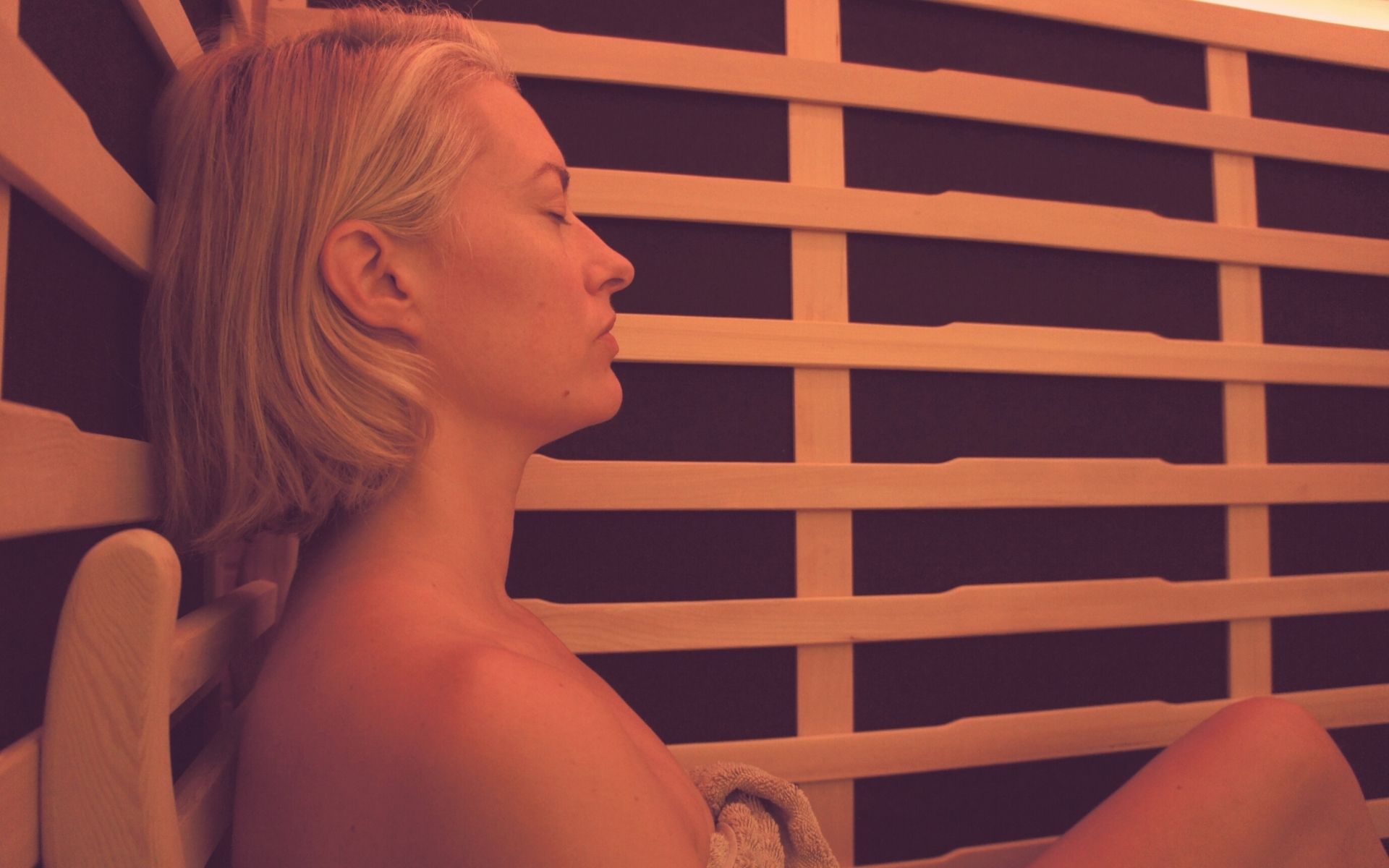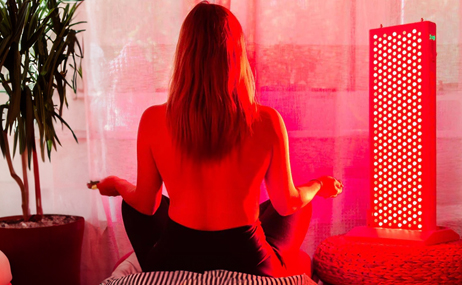What is the difference between an infrared sauna and a red light?
.
The difference between infrared heat and a red light panel lies in the wavelengths of the photons emitted by the products and the specific therapeutic effects they have on the body. Here we look at some of the health effects of infrared sauna and red light therapy:
|

Infrared Sauna
|
... |

Red light therapy (RLT)
|
- Deep Sweating: Infrared sauna heats your body deeply, leading to an intense sweating. This sweating helps to purify the body by eliminating toxins and other harmful substances through the skin.
- Increased Circulation: The heat from an infrared sauna can improve blood circulation, which can be beneficial for those suffering from circulation problems or muscle stiffness.
- Pain relief: Many infrared sauna users report relief from muscle tension, joint pain and pain. The heat can help muscles relax and reduce discomfort.
- Strengthens the cardiovascular system: Using an infrared sauna can help improve blood circulation and the elasticity of blood vessels, which can support heart health and reduce the risk of cardiovascular disease.
- Promoting post-workout recovery: Using an infrared sauna after exercise helps speed up recovery by reducing muscle stiffness and increasing blood circulation, which can help speed up muscle recovery and reduce exercise-related muscle pain.
- Weight loss: IR sauna can help increase metabolism and burn calories, which can support weight loss.
- Promotes lymphatic circulation: Infrared saunas help to increase lymphatic flow in the body, which helps to reduce swelling and promote detoxification.
- Balances hormones: Using an infrared sauna can help regulate hormonal balance in the body, which can be beneficial for both women and men of different ages.
|
... |
- Cellular Energy Enhancement: Infrared light therapy, especially with red light panels, focuses on delivering specific wavelengths of light that can increase cellular energy production and metabolism. This can help improve cell function and speed up the healing process.
- Skin health and beauty benefits: Red light treatments have been shown to have positive effects on skin health by reducing wrinkles, increasing collagen production and improving skin elasticity. This can result in a younger and healthier skin tone.
- Anti-inflammatory Properties: Red light therapy has anti-inflammatory properties and can reduce swelling and inflammation in the body. This is particularly useful for people with chronic pain conditions.
- Increases ATP production: Red light with a wavelength of 660nm, can stimulate the production of ATP (adenosine triphosphate) in the cells. ATP is the body's energy currency and increased production can contribute to increased energy, improved cellular function and faster recovery. This can be beneficial for athletes, people with fatigue or energy deficiency, as well as promoting general health and well-being.
-
Improves sleep: Red light therapy has been shown to have a calming and relaxing effect on the body, which can promote better sleep quality. By reducing stress levels and promoting relaxation, red light therapy can help regulate sleep cycles and provide deeper, more restorative sleep.
- Promotes scar healing: Red light therapy has been shown to have positive effects on scar healing. It can help stimulate collagen production and improve skin elasticity, which can reduce the visibility of scars and promote a smoother skin texture.
|
Conclusion:
Both infrared sauna and infrared light therapy can be valuable tools for promoting health and wellness, but they have different approaches and provide different benefits. Infrared sauna focuses on deep sweating, increased circulation and pain relief, while red light therapy, especially from red light panels, focuses on cellular energy enhancement, skin health and anti-inflammatory properties. The choice between them depends on your individual goals and needs for therapy and well-being. Of course, you can also use both of these techniques in your health and beauty routine to take advantage of their different properties.


